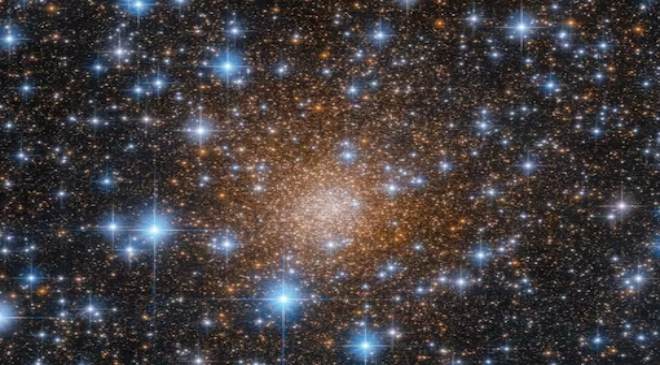NASA posted an image of Liller 1 globular cluster clicked by the Hubble Space Telescope which looked similar to earthen lamps lit during Diwali.
The American space agency Nasa greeted everyone on the occasion of Diwali with an image of Liller 1 globular cluster, equating the densely packed group of stars located 30,000 light-years away from Earth to earthen lamps or diyas lit during Diwali.
Read More: Iceland declares state of emergency after 800 earthquakes in 14 hours hit nation
“Happy Diwali to all those who celebrate. NASA’s Hubble captured a celestial festival of lights – a globular cluster – 30,000 light-years away from Earth, near the dense and dusty centre of our own Milky Way galaxy,” NASA said in its X post.
Read More: Imran Khan’s Wife Bushra Bibi to be Arrested? Sources Cite Fresh Evidence Obtained by Pak’s NAB
According to the space agency, the Liller 1 globular cluster contains thousands to millions of stars and is roughly spherical in shape. It is an extraordinary globular cluster compared to other globular clusters because the stars inside it took a very long time to form.
“Liller 1 contains a mix of very young and very old stars. Globular clusters typically house only old stars, some nearly as old as the Universe itself. Liller1 instead contains at least two distinct stellar populations with remarkably different ages: the oldest one is 12 billion years old and the youngest component is just 1-2 billion years old,” the Hubble Space Telescope said in a separate 2022 blog post.
This globular cluster is crucial in understanding the formation and evolution of galaxies and also gives insight into the early stages of star formation.
Read More: Biden-Xi Talks to Navigate Diplomatic Minefield Amid US-China Tensions, Economic Competition
It is hard to detect this globular cluster with the naked eye and also with powerful telescopes but the Hubble telescope’s wide field camera 3 (WFC3) could capture a precise image because it is sensitive to wavelengths of light that the human eye cannot detect.
Liller 1 can be termed as ‘neighbourly’ given its ‘close proximity’ to Earth in astronomical terms but it is located precisely within the Milky Way’s ‘bulge’, the dense and dusty region at the centre of our galaxy.
The Milky Way’s ‘bulge’ is a dense and dusty region due to which this globular cluster is not visible. The telescope’s ability to detect some infrared and red visible light which passes through the dusty region allowed it to capture this picture.





































